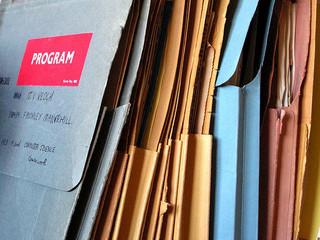
The ISO 9001 quality standard requires that documented information be maintained, retained, or both.
What is meant by documented information in ISO 9001?
Documented information covers documents and records. In everyday parlance, these two terms are often used interchangeably. Under ISO 9001:2015, however, they have different meanings.
Documents are created to describe what needs to be done. Because this can change, documents are maintained.
Records describe what has been done. This cannot change. Accordingly, records are retained.
ISO 9001 document requirements
ISO 9001:2015 sets out fewer document requirements than with the previous version of the standard. Among these are documents containing a quality policy, quality objectives, and the scope of the quality management system.
Documents needed to support the operation of processes must also be maintained.
Procedures created during the previous version of the standard are no longer required but can be kept if it is felt that they benefit operations.
ISO 9001 record requirements
ISO 2001:2015 requires the retention of 21 records. These relate mainly to operations and provide evidence that systems are in place for complying with the standard.
See section 4 (c) of ISO’s Guidance on the requirements for Documented Information of ISO 9001:2015 for a list of the mandatory records to retain.
What’s involved in controlling documented information?
Along with knowing what documented information is required, it’s important to understand the ISO 9001 requirements for controlling this information.
This is covered by paragraph 7.5 of the standard, which states the following requirements:
- Approve documented information for adequacy prior to issue
- Review, update as necessary, and re-approve documented information
- Ensure that changes and current revision status are identifiable
- Ensure relevant versions are available at points of use
- Ensure documented information remains legible and readily identifiable
- Identify external documents and control their distribution
- Prevent obsolete documents from unintended use
- Apply suitable identification if obsolete documents are retained.
Some documented information can change (plans). Other documented information doesn’t change (data).
Some documented information (plans) needs to be reviewed, approved, legible, up-to-date, communicated, and readily available.
Other documented information (data) needs to be identifiable, stored, protected, retrievable, and retained, but disposed of suitably once obsolete.
How isoTracker’s software can help
isoTracker’s Document Control Software helps to meet all these requirements.
The software is cloud-based and can integrate with our other quality management modules.
It offers these key features:
- a central online repository for documents
- full document activity history and automated version control
- automated workflow management for ensuring change management and approval processes are followed
- secure archiving of documents
- advanced document security and access control
- automatic task notifications and records of incomplete tasks.
Our Document Control Software is also affordable, making it ideal for small to medium-sized businesses.
Sign up for a free 60-day trial of isoTracker’s Document Control Software or contact us to discuss your cloud-based document control needs.


